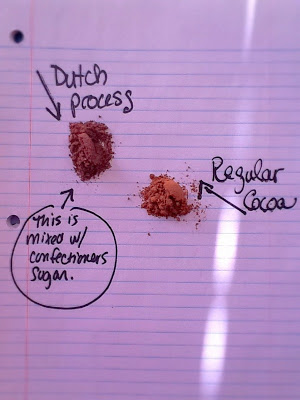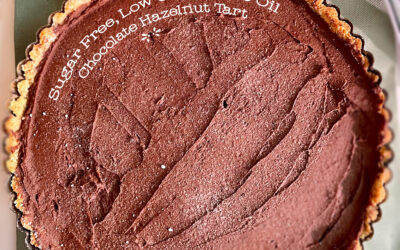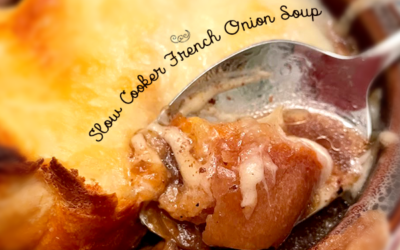I have been baking since I was old enough to hold my Nonna’s wooden spoon. And I never bothered to find out…or care…about the difference between Dutch process cocoa and regular cocoa. But recently I bought a lovely box of Dutch process cocoa from one of my favorite specialty stores in Lincoln Square, Gene’s (if ever in the area, you must drop in! Foodie heaven.) When I opened the box, I was surprised at how dark and fine the cocoa looked. I made the most delicious hot cocoa that evening. It was smooth and less bitter. That hot cocoa began my love affair with Dutch process cocoa.
I also started noticing some recipe reviewers online mentioning leavening changes on account of using Dutch process cocoa or not. This concerned me because I interchanged them often without thinking twice! Was there something to be done differently if you replace one with the other? So I did some digging, and I found out some things.
In all things baking, there is part creativity and part science. Much of what happens in baked goods has to do with chemical reactions, particularly with leavening. Some ingredients are more alkaline. Some ingredients are more acidic. How perfectly fluffy or lusciously dense something is depends on the perfect balance of these kinds of ingredients. Cocoa is slightly more acidic. When you taste cocoa, it has a slight bitterness. That’s the acidity level talking to your taste buds.
Dutch process is a process developed specifically to take down bitterness of the cocoa. Once the cocoa beans get shelled, the inside “nibs” get soaked in an alkaline solution to make the chocolate less acidic before getting ground into a powder. The process makes cocoa that has a more alkaline make up (a 7 versus a usual 5 on the acid-meter) and a richer, deeper chocolate color. Cooks Illustrated did some tests, and voted that Dutch made a creamier, deeper chocolate flavor. The article is here.
But the leavening issue is where things get interesting. If the cocoa is less acidic, and your recipe only uses baking soda for your leavening, the school of thought is that the baking soda won’t activate. So many cooks find the equivalent sub in baking powder. But after doing more research, most fellow bakers claim it usually makes no difference. There are many other acidic ingredients in your baking recipes that allow the baking soda to activate (eggs, for example). You don’t need to rely only on the cocoa. Maybe it’s why I never noticed anything different myself!
So the consensus is, if you want a deeper, less bitter flavor in your cocoa, go Dutch. Otherwise, use what you have and bake on! Everything should be fine.
– Posted using BlogPress from my iPad
- Sugar-Free, Low-Carb, Olive Oil Chocolate Hazelnut Tart - February 18, 2023
- Easy Slow Cooker French Onion Soup - November 28, 2022
- Recipe: Chicken Vindaloo with Whole Foods Vindaloo Curry Powder - January 22, 2022





